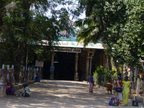Business Daily from THE HINDU group of publications
Monday, Apr 07, 2008
Dredging Policy — Charting a wider course

If more Indian companies are allowed to participate in the dredging, the rates of the Dredging Corporation of India may come down.
R. Vasudevan
The impact of the dredging policy amended by the Department of Shipping to be followed by the major ports with effect from April 1, 2007 for a period of three years needs to the taken stock of at the end of almost a year. This policy, which revises the earlier guidelines, states that the ports may ensure that pre-qualification criteria are fixed in advance and that they should not be so stringent as to restrict entry of certain potential Indian bidders.
Thus the policy is designed to give Indian companies owning Indian flag dredgers an edge in bidding for dredging contracts. Such Indian companies shall have the right of first refusal if the rate is within 10 per cent of the lowest valid offer. Further, it reserves the right to assign in public interest any contract for dredging work in any of the major ports to the Dredging Corporation of India (DCI) on a nomination basis. The major player in the country’s dredging field is the DCI with a turnover of Rs 623 crore.
According to the National Maritime Development Programme (NMDP) all existing berths in major ports will have to be upgraded and cater to 14 metres draft. As per the Tenth Plan, the various port expansion programmes would require total capital dredging of about 144 million cu.m. during the Plan period, involving all the major ports. Hence, the importance of dredging in the ports sector.
Build capacity
One of the stated objectives of the policy is that dredging sector is dominated by some international players and the capacity of Indian flag dredgers being inadequate, the Government’s intervention is necessary to build domestic capacity. However, the chances of Indian dredging companies, which are limited in number, being awarded contracts seem to be remote, because they are recent entrants in the field and doubts are raised by the ports about their capacity, performance, etc., while evaluating their bids. It is doubtful, therefore, how the Government’s intervention would help build domestic capacity.
It is an acknowledged fact that the foreign dredging companies quote exorbitant rates. It is well known that such companies form a cartel. The Sethusamudram project is a glaring example of how total dependence of foreign companies can stall the progress of prestigious projects. Though the intention of the Department of Shipping is laudable, in actual practice, the pre-qualification criteria fixed by the ports are so stringent that the entry of Indian bidders is restricted. Sometimes the criteria are tailor-made because the specification of companies having dredgers of specific capacity suits only foreign dredging companies. Unless the criteria fixed by major ports are relaxed in the case of Indian companies the likelihood of such companies being rejected even at the threshold cannot be ruled out.
The major ports will have to appreciate that in the case of Indian companies using Indian flag dredgers, they, being late starters, have risen from zero base to the present stage. They will, therefore, not be held eligible in terms of financial criteria prescribed by the ports in the tenders for dredging contracts. The focus of pre-qualification in the case of Indian companies may not be financial turnover but it may be the quantity of work done.
Alternatively, in the case of Indian companies having Indian flag dredgers the pre-qualification criteria may be based on the quantity dredged by them over a period. This would enable participation of the Indian companies in dredging projects.
Exorbitant costs
So far as the right of the Government to assign in public interest any contract for dredging work in any of the major ports to DCI on a nomination basis is concerned, the reason for reservation of such right to nominate DCI is stated to be that, in some cases where dredging is to be undertaken, the cost quoted by competing bidders is far above the estimated cost and sometimes unreasonably exorbitant.
The stand of the Department of Shipping seems to be that in such cases the government should entrust the work to public sector undertakings where the cost would be determined normatively to avoid the bidders from taking “undue advantage of the dredging needs of Indian ports”.
Though this objective has not been realised in projects such as deepening of the channel at Paradip Port, where the DCI’s bid (which is 72.06 per cent above the estimated cost) has been accepted, the experience of Indian major ports with foreign dredging companies in major projects would have perhaps weighed with the Government in deciding the matter. Perhaps, if more Indian dredging companies are allowed to participate in the projects by relaxing the pre-qualification criteria, the rates of DCI may also come down. Thus the fault lies not in the policy but in the failure of the department to ensure its strict compliance by the major ports.


